

by
Rene T. Estomo
Does it end?
Problem number 7 is about exploring the absolute differences of a set of four numbers. The numbers must be placed in four different columns. For each successive row, I replaced the entries by the absolute value of the difference of the entry just above and the entry just to the right in the previous row. In the fourth position, I used the absolute value of the difference of the fourth and the first (i.e. cycle).
|A-B| |B-C| |C-D| |D-A|
This exploration will also answer the following questions:
Will the process lead to a 0 in all 4 entries for some rows?
What is the largest number of rows before a 0 is generated?
I tried several sets of numbers. I would like to start looking at whole numbers. Below are the generated values.
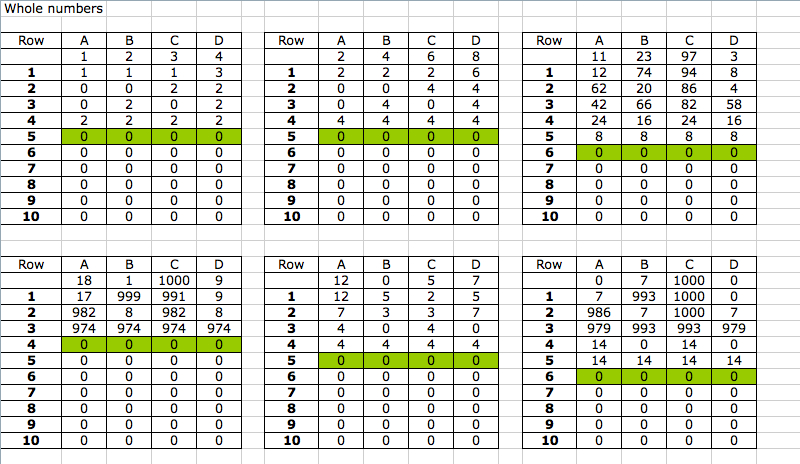
In the six sets of examples, it shows that most of the whole numbers tend to reach the zero difference at row 5th or 6th.
Consecutive and multiple numbers reached 5th row.
A set of numbers with zero may reach 6th row depending on how distant it is to the other three numbers.
One example reached the 4th row only. It is also noted that in its 3rd row, the number is big.
After generating the tables for whole numbers, I wonder what this will be if the numbers are negative. Below is what I found out.
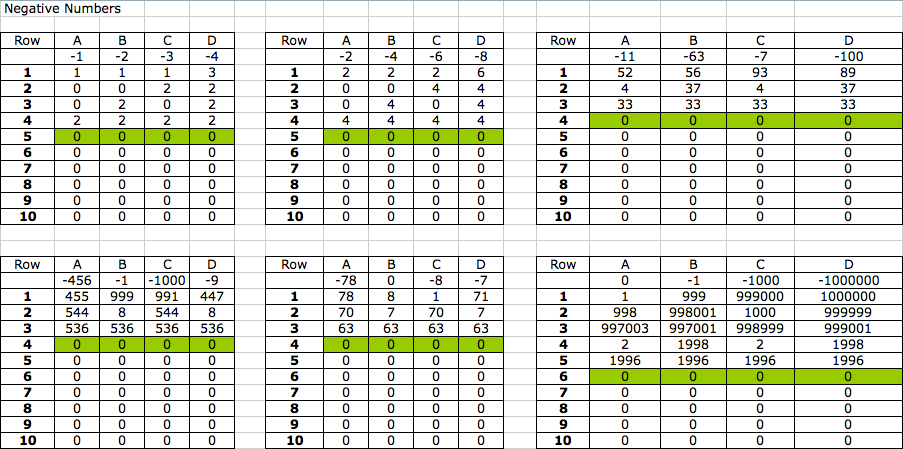
It's almost the same with the whole numbers. The rage of the differences to reach the value of zero happened at the 4th, 5th or 6th.
Again, it is depending oh how huge is the difference of the given numbers.
Not satisfied with the result above, I proceeded to the combination of the previous tables. I plotted the integers.
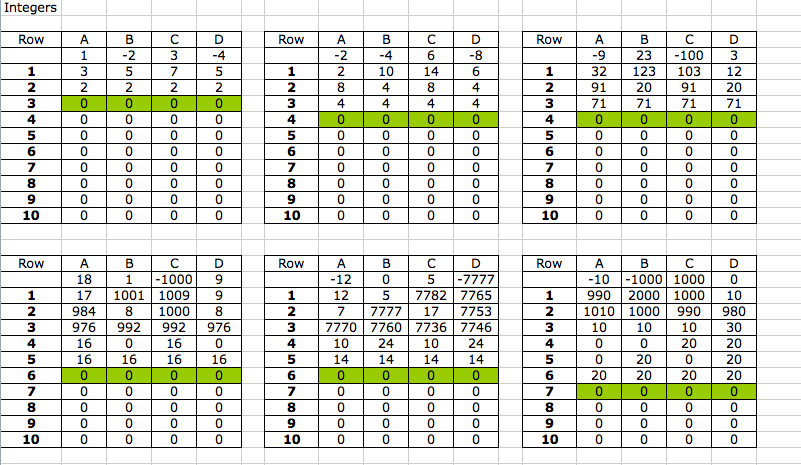
Now here, I see a little different from the previous tables. I have now examples of tables that reached zero at the 3rd row and 7th row.
The one reached the 3rd row is composed of a set of 4 small number with a small distance from each other.
On the other hand, the one that reach the 7th row is composed of a larger number.
And finally, I looked at the set of rational numbers.
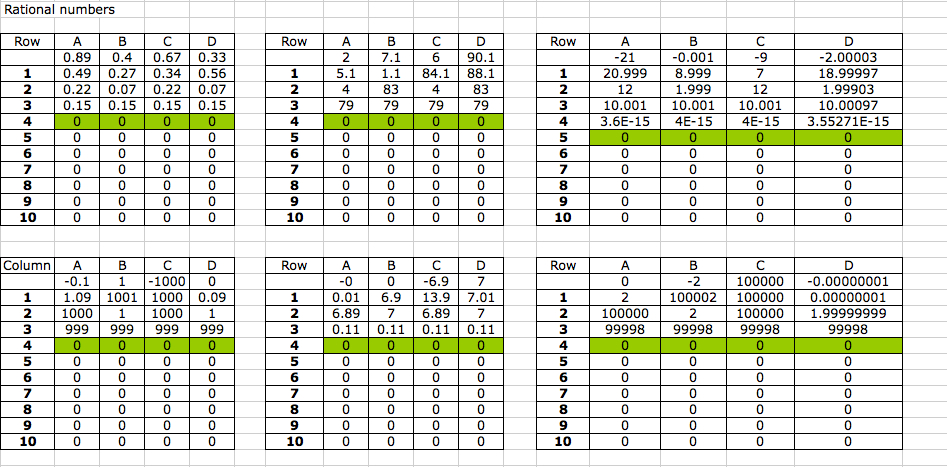
Four out of the six tables, the set of numbers given reached the zero absolute difference at the 4th row.
Only the table with all negative values reached 5th row.
My conclusion is given a set of four rational numbers and taking the absolute differences of these numbers will lead to limit of at most seven possible times before will reach zero.
I'm curious to look at numbers other than a set of four. I tried set of two, three, five, six, and eight. Below are the tables.
Sets of three and two rational numbers
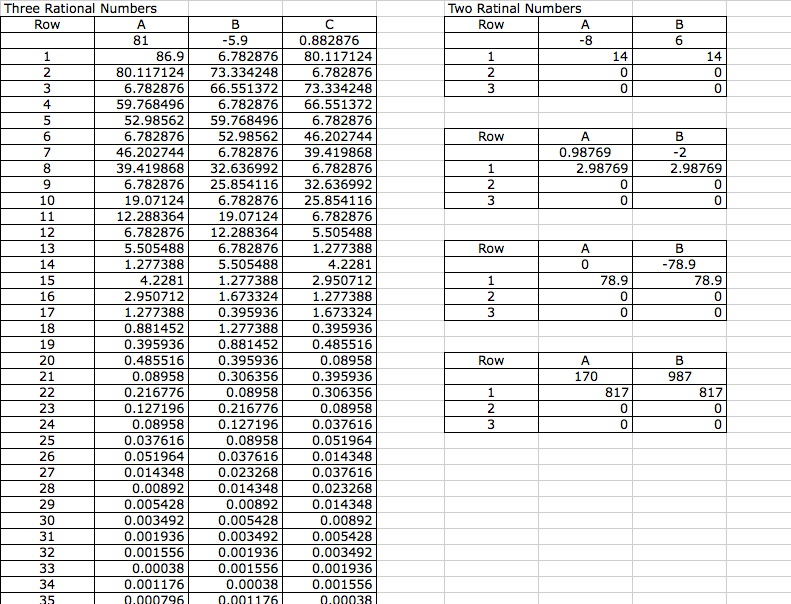
Set of five and six rational numbers
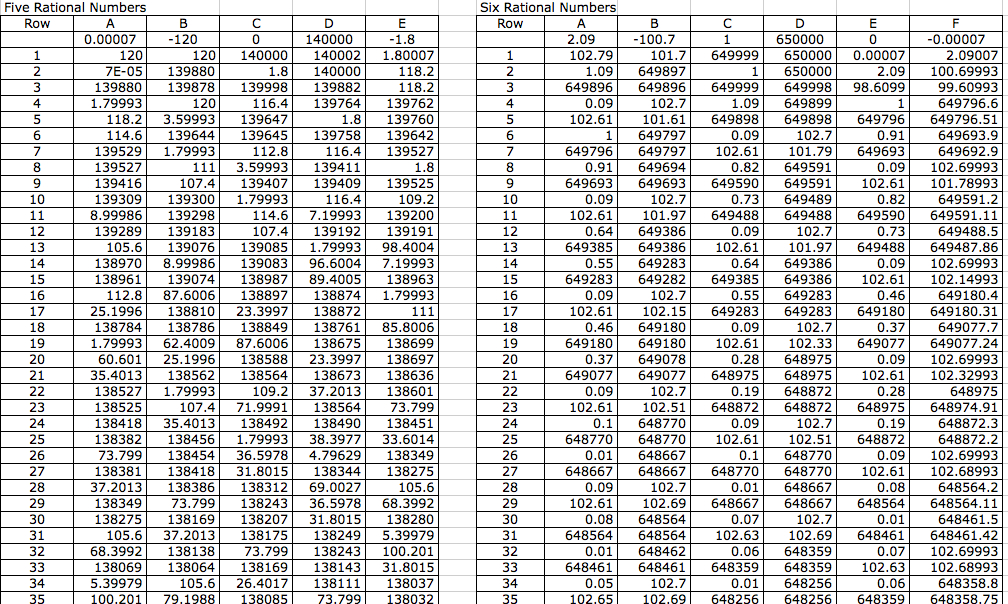
Set of eight rational numbers
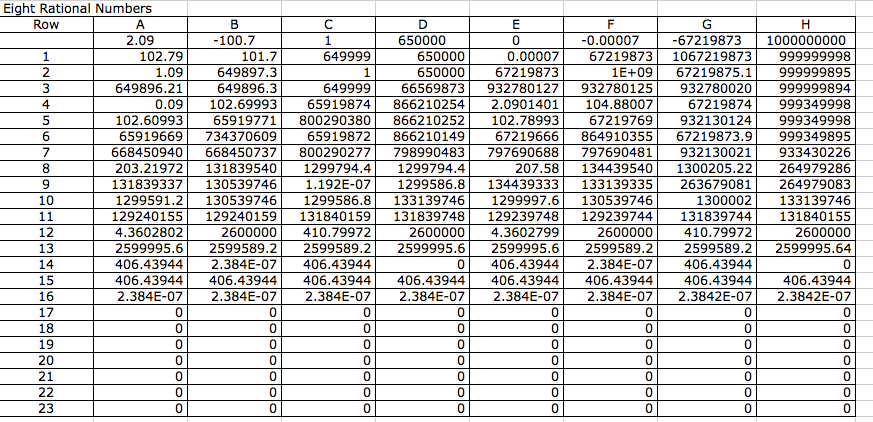
It seems that the set of numbers that will lead to zero difference is two, four and eight. Is this a coincidence that these sets are power of 2? A more investigations is needed to look at other sets.